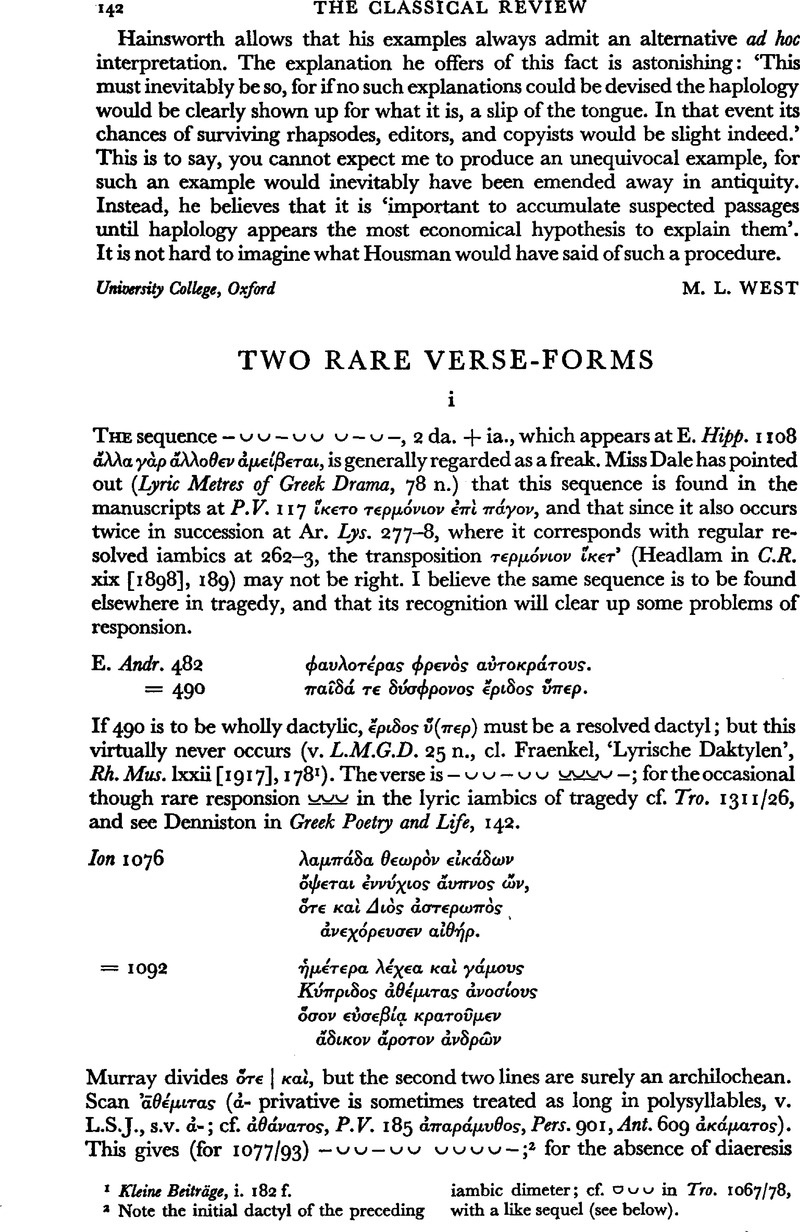No CrossRef data available.
Article contents
Two Rare Verse-Forms
Published online by Cambridge University Press: 27 February 2009
Abstract

- Type
- Review Article
- Information
- Copyright
- Copyright © The Classical Association 1965
References
page 143 note 1 Kleine Beiträge, i. 182 f.
page 143 note 2 Note the initial dactyl of the preceding iambic dimeter; cf. ⌣⌣ Tro. 1067/78, with a like sequel (see below).
page 144 note 1 Editors since Reisig have usually taken it to be a gloss; but it is not a glossator's word, though collation with 534 is not impossible. Jebb thought it spoiled the dramatic effect by letting the cat out of the bag; but this is the very reason why Oedipus uses it, instead of calling a spade a spade. The chorus shows a like delicacy at 534. Hermann in his second edition restored it to the text, and wrote Λαἴου ἴστε τἰμ — ⋯ – ⋯π⋯γομομ but if my interpretation is right, the transposition is not needed.
page 144 note 2 See ‘Euripides and the Judgement of Paris’, J.H.S. Supplementary Paper No. 11 (1965), pp. 72 f.
page 144 note 3 Hesychius has ⋯ροτο⋯ς [sic]. ⋯νιαυο⋯ς Σοφοκλ⋯ς Τφαχιν⋯ας, which may be this passage; hence Erfurdt read δωδεκ⋯τους⋯ρ⋯τους, but this can hardly be right, as Ellendt s.v. ⋯ροτος remarks.
page 144 note 4 A similar licence appears in the first half of Lys. 324/38, ⌣⌣⌣⌣⌣⌣. The relevance of Dale's observation to Tr. 824/34 was pointed out to me by Lloyd-Jones.
page 145 note 1 The odd man out would then be the 4 da. + −⌣⌣⌣−− at I.A. 1331; but a possible analogy is O.C. 241, 249, 4 da. +−⌣⌣−−⌣, on which I suggested that such clausulae, and their relation to the preceding dactyls, may sometimes be ambiguous.
page 145 note 1 So Fraenkel, o.c, 324 = 205. In this sequence the dactyls are normally followed by diaeresis, which is absent in some of the examples examined above; but since there is synaphea, this may not be significant,
page 145 note 3 Cf. G.V. 333 n. and Dale in C.Q. xxxi (1937). 108–10.


